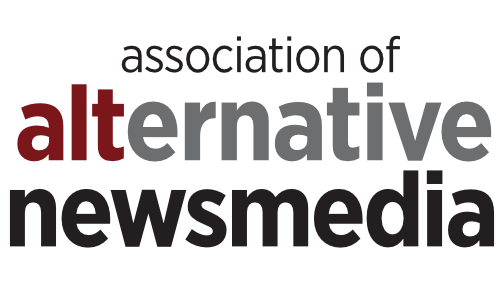Editor’s Note: This is the 36th in a series of “How I Got That Story” interviews featuring the winners of the 2005 AltWeekly Awards. First-place entries are collected in the book “Best AltWeekly Writing and Design 2005.”
J.J. Marley keeps busy on Orlando’s creative scene — working DJ turntables, designing Web sites, creating album covers and t-shirts. When he still was holding down a full-time gig as art director for Orlando Weekly, Marley oversaw the creation of three covers that won the newspaper a 2005 AltWeekly Award for Cover Design.
“Nader Wins!” spoofed the presidential election results using an antique newspaper font. “Von Who?” mocked the Von Dutch logo by adding graphics to a portrait of a young woman in a t-shirt. And “94 Reasons Not to Vote for Bush” featured a lively caricature of Dick Cheney as the puppet master of President Bush.
After five years at Orlando Weekly, Marley left in December 2005 to focus on his freelance work. More on Marley can be found at www.marleydidit.com.
What is your creative background?
I come from a graphic design background, doing everything from offset print media to brochures to illustrations and photography, so I kind of got all the background experience before going into publication design, which is entirely different from those other things. But having experienced other fields definitely influenced how I went about doing publication design. Also, I went to the Poynter Institute in St. Petersburg for classes on publication design, which really helped.
Does a great cover really matter, and if so, how does it matter?
It matters from a readership standpoint. You want something that’s going to catch the reader’s eye, and at the same time it’s got to be attractive to sell more retail ads and Web sites, since it’s a free paper. To get a bigger readership is the first and foremost goal of any group of cover designers — to make sure there are none left on the stands at the end of the week.
How do you gauge a good cover? Is it the number of people who pick up the paper?
It is how many people pick up the paper, but it’s also the feedback. We have a letters page, so a lot of times people will say “Hey, great cover,” or “Hey, that was a shitty cover.” Also, sometimes the feedback relates to the content of the story that the cover is representing. Weekly papers usually do more illustrated covers than a regular newspaper, so you get to develop the content of the story, whether it’s a news feature or any other kind of feature.
How soon does the art director get involved in developing the cover for the story? Is it while it’s being written or is it afterward?
It’s usually afterward. A lot of times there’s a heads-up on what the story is, but since it hasn’t been written yet, it’s hard to develop a concept or a theme related to the content. So we ask for a working headline and try to work something off of that. That way, no matter what the content, we have some room for flexibility. The headline will still relate to the content of the artwork.
Do you read the stories all the way through before you design the cover?
If the stories are done in advance then you have that luxury, but usually you don’t. Sometimes it’s only a matter of three or four days between the time the story is done and the paper comes out.
Can you tell me how each of the winning covers came about?
The “Von Who?” cover, that one was a pretty easy one and it came out pretty well. The story was one that we picked up from another alternative out in California, basically about the Von Dutch phenomenon and how it made a comeback. There’s a story about its background in alcoholism and racism, which many people didn’t know. It was kind of a nice story to run that daily papers and other magazines didn’t really pick up on. And it lends itself to a knock-off, since the logo was well-known. We used it for the headline title and the cover, and made it look like it was on a girl’s t-shirt. So even though it was a simple concept, it came out really nice.
For “Nader Wins!”, that was just a spoof, that was our tribute to other humorous papers such as The Onion.
And then “94 Reasons Not to Vote for Bush,” that was one of our freelancers, Glenn Ferguson, and he’s an excellent airbrush artist. It’s a good example of how a cover can be illustrated when photography is not available, or when you don’t just do text stuff. You actually have a story and a headline well enough in advance, so you can create material for the concept of the story.
How do you decide whether to do photography or illustration?
That all kind of depends on the story. You never really know. Often you try to get photography first, and if you can’t, that’s where the illustration comes in, in lieu of photography. One usually dictates the other, but a lot of times you want to have a little bit of both. I’ll have an illustration on the cover and inside photos, and sometimes vice versa, sometimes a little bit of both. It all depends on how well the story lends itself to either type.
I think it’s interesting that you change the font of the masthead with each cover. Do you think that’s unique?
That was actually just kind of accidental. We usually don’t change the logo. The “Von Who?” cover was a logo that we were using pre-redesign, and we rolled out our redesign of the entire paper later that year, and that’s the one you’ll see on the “94 Reasons Not to Vote for Bush.” Then once or twice a year we’ll change the logo altogether as a joke or whatever, just to match the theme — like for the Halloween issue, we’ll give it a Halloween theme. It’s not something we regularly do, it just so happened those three covers we submitted had three different logos.
How long does each cover take to design?
Including the time that you have to work with the photographers and edit the photos, as well as designing the cover, anywhere between one to six hours. It really depends on the complexity and how difficult it was to get the photo shoot done, if you’re doing one that utilized photography. If it’s just illustration or text, the cover only takes about an hour or two.
How key were Glenn Ferguson [illustrator] and Brook Pifer [photographer] to the winning covers? Did you call them up and say “I have this idea” or did you give them the story?
I really give them my idea first, and if I had something from one of the writers, like a summary or a working title, I’d give them that as well. But a lot of times I’ll just give them the concept after talking with the writers and the editors. We’ll find out what the story is, and then we’ll know if a portrait would be more appropriate for a certain story or if a landscape shot would be more appropriate. So we kind of go over the details and then come up with some creative concepts. I would definitely utilize freelancers that had certain talents in different areas. Brook, for example, is an excellent band photographer, but she also does excellent portraits, so a lot of times I’ll use her for that kind of high fashion look that uses saturated colors and filters and stuff. She uses a really nice look. In the case of Glenn Ferguson, he’s a caricature artist by trade, but he likes airbrush and other stuff, so he can really distort things, and he has a bit of a different style. There were about three or four other caricature artists I was using, and they each have their own style. I think we got second place in illustration this year, and that’s Joe Bluhm, and he’s another freelance artist we use. I’ll delegate to some degree our specialty work.
What do you consider a successful cover?
One that generates a good vibe — you know, not only everybody on staff likes it but everyone that picks it up likes it. If they like it enough, they usually send us letters and give us feedback. Of course, if we win an award, that would suggest a successful cover as well.
Lindsay Kishter is a junior at the University of Maryland’s Philip Merrill College of Journalism. She interned at the Association of Alternative Newsweeklies last summer.








